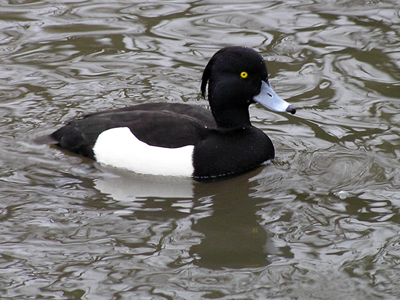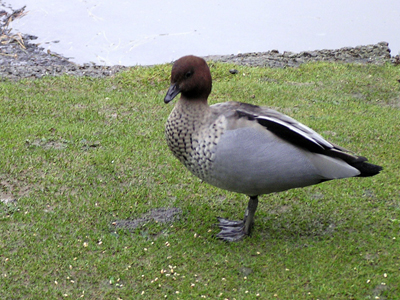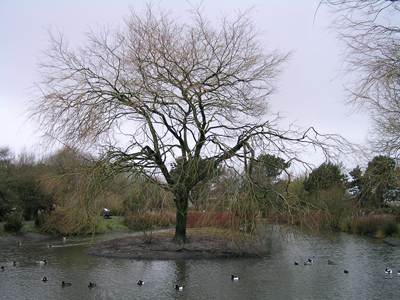Although we are now starting a colder and drier spell – maybe with snow on the way – we have had nothing but rain for months. Ideal if you have webbed feet!
So we recently made one of our regular trips to the Wildfowl & Wetland Trust reserve in Llanelli. At this time of year the ducks and geese are always so friendly and many are happy to be fed with corn by hand.
Usually the first birds to greet us are the nenes (pronounced nay-nays) – it’s hard to realise these Hawaiian geese are an endangered species back home, as they are common in WWT centres. They are so tame that they usually prefer to eat from the palm of your hand and sometimes look at you as if you are stupid if you put corn on the ground and expect them to eat it…

Nenes or Hawaiian geese (Branta sandvicensis) – I couldn’t feed them by hand and take the picture at the same time!
As well as the birds, the centre is great for the winter textures and colours of trees and plants. So here are some of the things we saw…
These next few birds are a long way from home, being native to the Southern hemisphere…

The magpie goose (Anseranus semipalmata) comes from New Guinea and Australia. It is not a true goose and has a whole family and genus to itself…

I think these strange birds, with subtly iridescent plumage, are Muscovy ducks (Cairina moschata), which come from Central and South America…

Alder (Alnus glutinosa) – the dangly catkins are male and the small ones that look like cones are mature female catkins…

It’s not in focus, but I wanted to capture this orange jelly fungus (Dacrymyces palmatus) – the common name is witch’s butter and it is apparently edible but tasteless…

Usually rare in Europe, the Siberian red-breasted goose (Branta ruficollis) – I love the colours of its paintwork!
And finally a general view…
There’s always something new to spot at Llanelli WWT – and it’s especially good in winter when, on a damp day, you may hardly see another human being. Brilliant!
































The ducks were very obliging in posing for you – it’s great to be able to see them up close and personal.
They will do anything for food – in winter at least. In summer they are grumpy and keep themselves to themselves!
Thanks for dropping by 🙂
Nice pics, though most are obviously from the wildfowl collection and not wild. No bird lister would “tick” the captive species!
You can see wild eider in South wales – in fact the near Burry estuary is the one reliable place for this species. I hope to see them (and some other special birds) on January 20th when we are going to Whiteford Point with Glamorgan Bird Club. See http://www.glamorganbirds.org.uk/gbcevents.htm if its of interest to anyone.
The nene are a famous conservation success story. The last few wild birds were taken by Sir Peter Scott to Slimbridge (the first WWT reserve). They have now been successfully reintroduced to various islands and national parks in Hawaii. The name nene (‘nay-nay’) comes from their nasal vocalisation.
The beautiful Red-Breasted Goose has Endangered status. It is particularly vulnerable because it winters at just 5 locations (mainly in Bulgaria and Romania) and is equally concentrated at its Arctic breeding grounds.
We discovered last year that WWT has a concessionary rate for ‘seniors’ and now have a joint senior membership for £40. In fact, I’m not quite old enough for that (it’s set at over 65), but before anyone snitches on me – WWT know and were happy to offer us both this membership. We’ve been members for a long time. Unlimited free visits to any WWT centre – great.
I hope other readers didn’t think the birds were “local”, just because I flagged up the Southern Hemisphere ones as being a long way from home! It’s simply that I know when I am in the Southern Hemisphere part of the grounds at Llanelli, while the rest of it blurs into one for me, geographically.
And as for bird “listers”, I am not one of those, although I mentally tick off what species I can now recognise, even if they are captive.
Interesting about the red-breasted geese. They are a favourite as a drawing of one is on the front of the guide I use to identify the wildfowl (see picture in this post).
We are also members of the WWT, but not quite “seniors” yet – but close!
Best wishes 🙂
looks like a wonderful place to visit… we have a similar center in Wisconsin… so many subjects for the camera
Indeed. Thank you so much for taking time to visit.
Best wishes 🙂
Beautiful photography Pat. Thank you!
Ah, but you haven’t seen all the blurred pictures I took when the birds were running around (which they did a lot!)
Best wishes 🙂
Which is a testament to your patience (as well as skill) 😉
Wow so many different types of duck and the photos of the habitat is so lovely too.
Sarah x
Thanks for your kind words. I guess the nearest WWT reserve to you would be in Arundel in Sussex – although there are great native wildfowl in and around Poole Harbour and no doubt elsewhere in Dorset, of course…
Lovely post, Pat. So many varieties of waterfowl. I also enjoyed the post because I am fascinated by lichens.
I have been thinking about doing a post about the ducks that reside at a lake near where I live, although I may have a bit of trouble identifying the different species.
Thank you. I love lichen, too. I even have one of those fold-out colour guides to lichens, but it still doesn’t really help me identify them in detail.
You must do a post about your ducks. There are lots of good guides around (books and online) and surely you won’t have too many species there, will you? Best of luck 🙂
I do love my waterfowl so happy to enjoy your photos..I have tried to ID lichens and not much luck, but I find them so interesting…Michelle